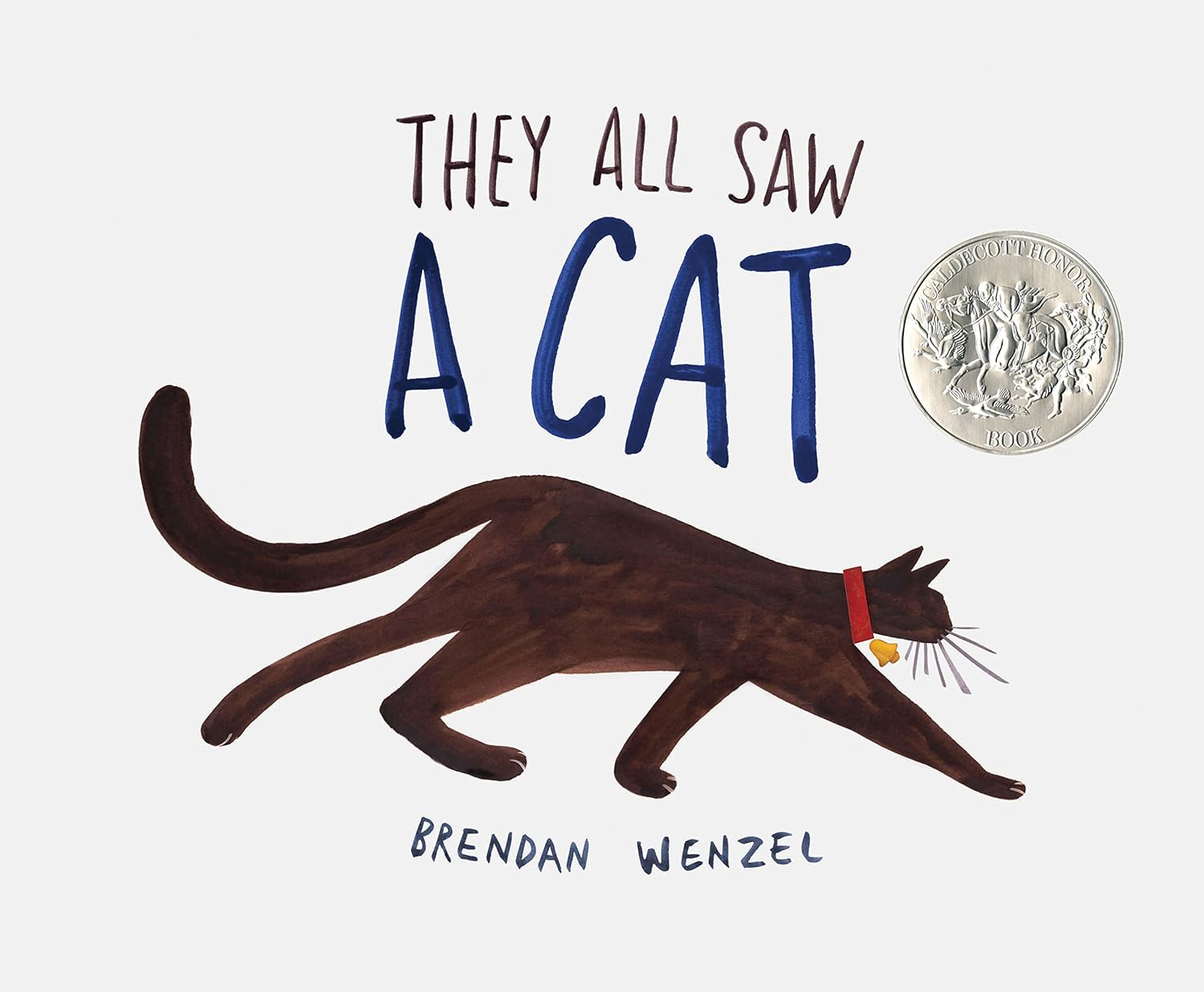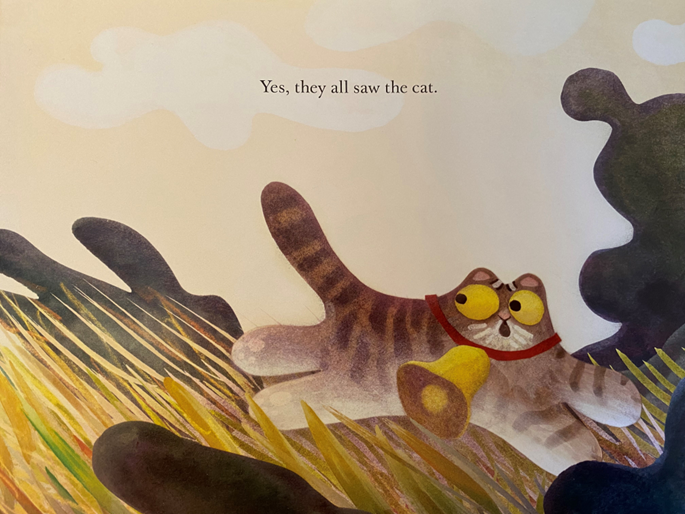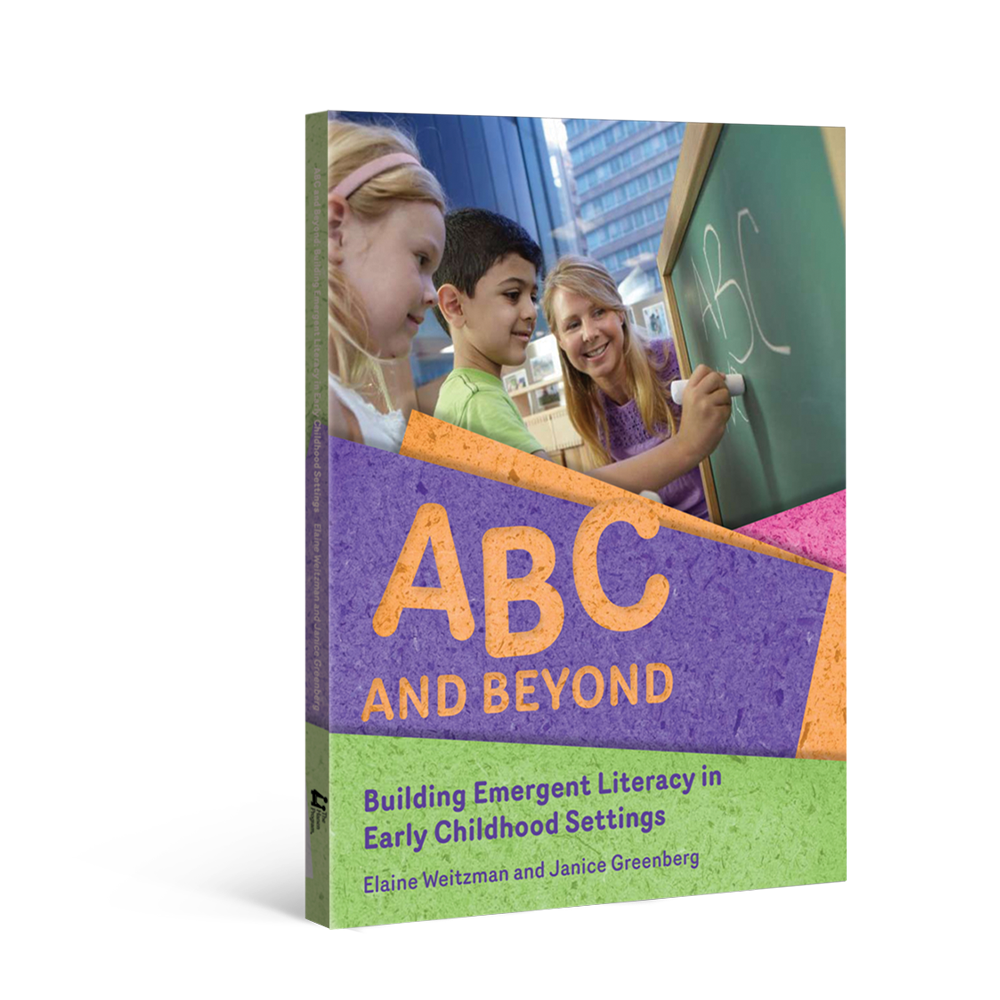This month's Book Nook topic is...
Building Perspective-taking Skills with
They All Saw a Cat

An important part of understanding stories is recognizing that characters in a story have different thoughts and feelings that influence what they say and do. Recognizing that others may see the world from a different perspective is not only an important part of understanding what motivates characters in stories but is also an important part of understanding why the people in our lives act or respond the way they do. Book reading provides opportunities to talk about how we all see and experience the world differently.
Let's get started!
The Book:
They All Saw a Cat by Brendan Wenzel
Why We Chose This Book
In this beautifully illustrated book, we follow a cat going for a walk. As the cat walks along its path, it passes by insects, animals, and a young child. Each character the cat passes sees the cat differently. To the small mouse the cat is terrifying but to the young child the cat is friendly and sweet. The book offers many opportunities to discuss how different perspectives can influence how characters may think, feel, and act.

The First Reading
The first reading is all about allowing the child to become familiar with the story. There is very little text in this story which gives you a wonderful opportunity to describe the pictures and draw the child’s attention to the characters’ thoughts, feelings, and perspectives. For example, when different animals see the cat, you could say:
- “To the mouse – the cat has sharp teeth.”
- “To the dog – the cat looks sneaky.”
- “To the fox – the cat looks small.”
Next Readings
Once you feel the child is familiar with the story, you can start having conversations about the characters’ points of view or perspectives. To do this, you can make comments or ask questions to help the child actively think about what the characters might be seeing or feeling and how this may make them act.
Make “thinking-out-loud” comments
“Thinking-out-loud” comments show the child how you are thinking about the story. When you use “thinking out loud “comments, you show the child that you are trying to figure out things that are not stated in the book.
“Thinking-out-loud” comments start with words like:
- “I’m thinking that…”
- “I’m wondering about…”
- “I’m trying to figure out…”
Here are some examples of “thinking-out-loud” comments you could use to build the child’s perspective-taking skills:
- "I wonder how the mouse feels when it sees the cat."
- "I wonder why the fox sees the cat as being so small."
Ask “thinking-out-loud” questions
You could also ask questions that highlight what a character might be seeing, thinking, or feeling. Here are a few examples of questions you could ask:
- "What do you think the dog is thinking when it sees the cat?"
- "Why does the fish see the cat as having huge eyes?"
Make comments and ask questions to make predictions
Continue to talk about how each character’s thoughts and feelings may influence what they do when they see the cat:
- "The dog doesn’t like the cat, so I think it will growl at the cat."
- "What do you think the mouse will do when it sees the cat?"
- "What do you think the flee will do when it sees the cat?"
Continue to Practise Perspective-taking After You Read the Story
When you finish reading the book with the child, you can continue to build perspective-taking by asking questions or making comments. Ask the child how they feel about cats. Talk about friends or family members and how they feel about cats. For example, Aunt Janice feels nervous when she sees a cat. Why do you think she feels this way?
You can also build perspective-taking skills during everyday conversations. Talk about the differences in perspectives of the people in the child’s life and how these differences influence how they respond or act.
Happy reading!
More Resources
The strategies in this Book Nook post are drawn from Hanen’s practical, research-based guidebooks for building emergent literacy. Explore the links below to learn more about how these guidebooks can support you.
For Parents I'm Ready! guidebook
I'm Ready! guidebook
For Educators ABC and Beyond guidebook
ABC and Beyond guidebook
